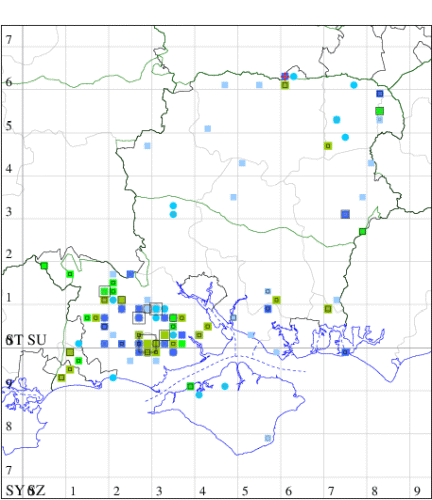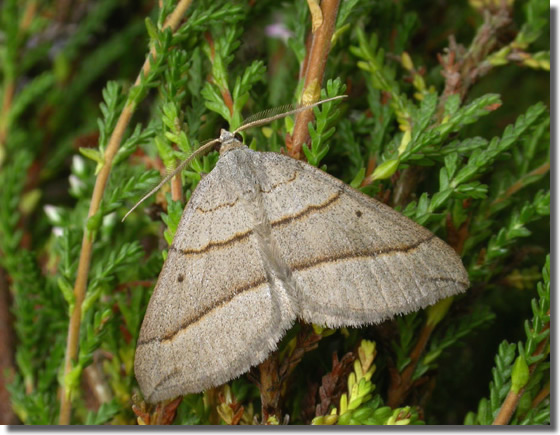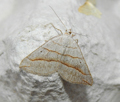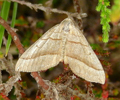July Belle
Scotopteryx luridata
Checklist Number70.041 [B&F: 1734]
Verification
Record will require further evidence, at least a good photograph, unless CMR is aware recorder has confidence in identification
Classification
| Family: | Geometridae |
| Subfamily: | Larentiinae |
| Genus: | Scotopteryx |
| Species: | luridata |
| Authority: | (Hufnagel, 1767) |
Common on heathland, moorland, downland, scrubland, open woodland and shingle beaches throughout much of the British Isles. In Hampshire, generally annually reported from the heaths of the New Forest but very irregular in the north-east of the county, and rare or absent elsewhere (the last Isle of Wight record was in 2004 (as of 2017). Wingspan 32-38 mm. Very similar to Lead Belle S. mucronata, which see for differences. Larva feeds on Dyer's Greenweed, Gorse and Petty Whin.


The abundance in each month is indicated as follows:
 No records
No records Very occasional
Very occasional Irregular
Irregular Uncommon
Uncommon Off-peak, but not unusual
Off-peak, but not unusual Off-peak, but not unusual
Off-peak, but not unusual Main flight time
Main flight time| J | F | M | A | M | J | J | A | S | O | N | D | |
|---|---|---|---|---|---|---|---|---|---|---|---|---|
| Adult |  |  |  |  |  |  |  |  |  |  |  |  |
| Larval |  |  |  |  |  |  |  |  |  |  |  |  |





